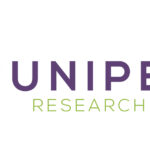The lure of paying over time lies with the predictability of the repayment.
Consumers don’t think of pay later options as credit, at least not in the traditional sense. They see a finite timeline over weeks or months, and a point at which all has been paid off.
As Affirm CEO Max Levchin told Karen Webster in a discussion featured during the Pay Later Unpacked event held by PYMNTS On Air, “the sense of clarity of when [payments] start and end is powerful… The appeal of pay later is not that it’s some cool way of borrowing money. It’s the sense of control around the schedule and the plan that you create.”
There’s also appeal for merchants, who want to boost their conversion rates. In terms of customer-centric costs, merchants can spend more than 30% of gross sales just to get customers’ attention, Levchin said. Once consumers arrive at the checkout counter, whether virtual or brick-and-mortar, merchants want them to pull the trigger and close the sale.
The 13-Year-Old Startup
Thirteen years into its journey of still thinking like a startup, Levchin’s Affirm is tied to merchant sites and has been embedded in commerce and digital wallets. The company has its own merchant marketplace, a financial services platform and a discovery platform for merchants to enable 0% financing offers.
“We’re a payments network,” Levchin said, adding that “we are, today, in the world of network comparable like American Express … I’ve often compared Affirm to a sort of aspirational Amex. We want to be thought of as the company that stands behind the consumer in a way that goes above and beyond.”
The competitive landscape is growing ever crowded as, for instance, banks enter the pay later fray, and with a nod to the fact that banks may have a distribution advantage, Levchin said Affirm can “move at 10 times the speed of any bank.”
Beyond the banks, one can find pay later across a broad range of checkouts, which has been gaining momentum through the past half-decade, he said. What was once an interesting idea is now part of the standard package offerings of commerce at the point of sale.
“This is no longer optional,” Levchin said. “There has never been a monopoly in payments, and we want the market to be competitive… The fact that traditional bank card issuers are waking up to the power of these fixed-term plans” helps drive awareness and adoption.
By the Numbers
There’s a tailwind in the fact that young consumers are eschewing credit cards, said Levchin, who added that they’re skeptical of taking on long-term, and possibly unmanageable, debt. For Affirm, the proof lies in the numbers.
“We’ll do $35 billion this fiscal year, and the 20-plus million active users speaks for itself,” he said.
Repeat purchases are accelerating as recurring behavior refutes the notion that pay later options simply gain on the heels of new accounts and first-time users who may be overextending themselves. Levchin also pointed to the fact that merchants benefit from increased conversion rates as cart abandonment rates plummet 28% and cart purchases increase 60% (as measured in dollars) when Affirm’s pay later options are in the mix.
Affirm is cannibalizing credit card transactions from banks, Levchin said.
“The stratification of our offerings is very clear,” said Levchin, who added, “We’re not the least expensive [options for merchants], and we don’t compete on price. We complete on being able to say yes more often by driving higher conversions and taking good care of the customer… We don’t charge them late fees.”
That model is a moral one, with steady and transparent merchant fees, in contrast to the money that is made by competitors on late fees and other charges that stack up when, as Levchin said, consumers are paying the least attention.
Affirm’s app also lets users see their purchasing power at any given time, and feedback conveyed to consumers can help them decide whether a purchase is too large or may take too long to pay back (and requires a down payment), he said.
The Affirm Card
Levchin has said in presentations and on analyst calls that the “Affirm Card is the best manifestation of how to use Affirm.” Simple math offers insight into the economics of capturing 20 million users, whose average household income stands at $75,0000 — and 10% of that, at $7,500, is a reasonable share of spending that could make its way onto those cards connected to third-party accounts. Grocery remains a key area of spending on those cards, although paying over time can just as easily cover a $2,000 meal in Las Vegas or even a medical procedure.
Looking ahead, Affirm will allow other issuers onto its network, and through its February pact with FIS, the Affirm Card construct will be offered to any bank that wants to add pay later functionality to its debit cards.
“Over time, we will look more and more like what Amex does today,” Levchin said. “You can get an Amex branded card from a bank that is not American Express.”
Although the political and regulatory climate is uncertain at the moment, and the fate of the Consumer Financial Protection Bureau has yet to be determined, there are still indications that regulators are curious about technology and its benefits in payments.
From a macro and industry-wide point of view, Levchin told Webster that although he remains watchful, there are no signs of recession-like impacts hitting the portfolio — and the short-term (four-month) durations of the loans mean they are paid off quickly.
“There’s a certain degree of natural accretion toward products like ours that happen in a more cautious consumer environment,” he told Webster, adding, “When there’s stress in the news and stress in the stock market, you want to know that the purchase is not going to put you under. Being able to say, ‘There’s a plan, and I know when the plan ends,’ is a nice feeling.”






